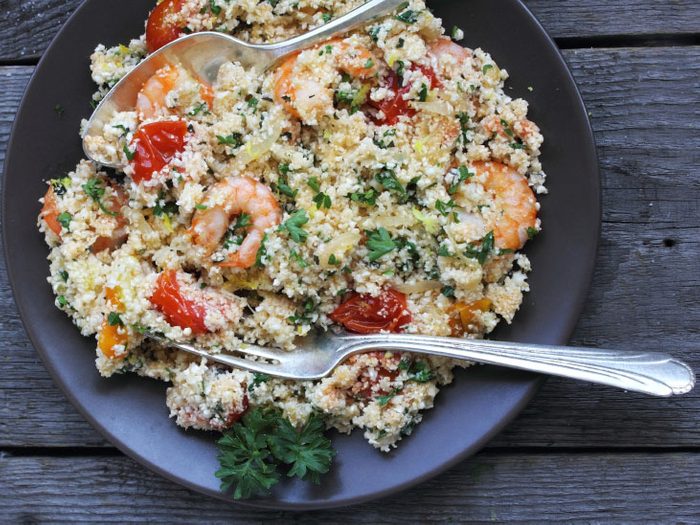
Cauliflower Couscous
Why cauliflower: Vegetables from the brassica or cruciferous family, including cauliflower, are the richest source of a sulfur-containing compound called glucosinolate, which generates metabolites with DNA-protective properties. A number of studies have linked a high consumption of brassica veggies to a reduced risk of lung, stomach, breast, colon and prostate cancers. Cutting your cauliflower into small pieces to release the activating enzyme and enjoying it lightly steamed or raw will help protect the delicate nutrients and provide the best access to those cancer-fighting compounds.
How to: Whip up a cauliflower couscous by pulsing 1/4 head of cauliflower in a food processor until it forms a granular consistency. Lightly steam the cauliflower, along with 2 cups spinach, in a covered pan with 2 tablespoons water for 2 minutes. Mix together 3 tablespoons each balsamic vinegar and olive oil, along with 1 teaspoon each Dijon mustard and honey. Mix together the cauliflower, spinach, 1 cup cooked whole wheat Israeli couscous (prepared according to package directions), 3 diced figs, 1 oz sliced toasted almonds and 1 oz crumbled chèvre. It makes a deliciously light supper, and leftovers keep well in the fridge. Serves 4.
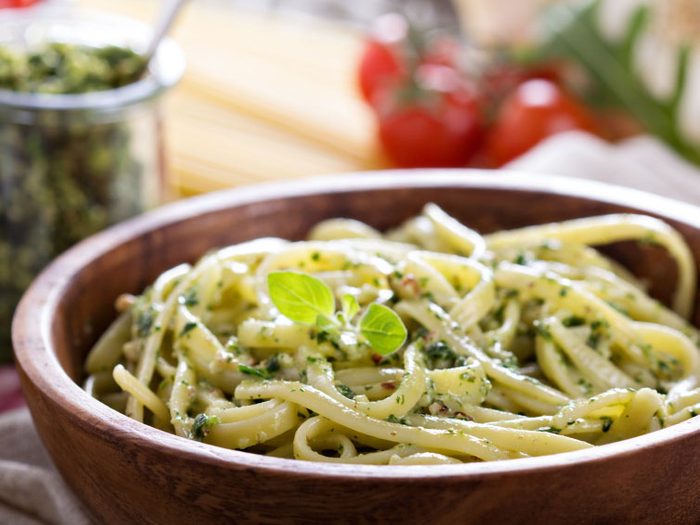
Ricotta Kale Pesto Sauce on Pasta
Why ricotta: Not only is it loaded with bone-building calcium but ricotta is also good for muscle growth and recovery. That’s because it contains fast-acting whey protein, along with a natural source of muscle-soothing branched chain amino acids. Taken together, ricotta provides the same powerful combo sold in the pricey powders and shakes that fitness experts recommend to athletes and sports enthusiasts.
How to: Jazz up your usual pasta salad with a rich-tasting ricotta-based kale pesto sauce. To whip up the dressing, remove the ribs and roughly chop 8 oz kale; blanch kale in a large pot of salted water. Once limp, plunge the kale into ice water, then drain and pat dry. Purée kale with 1/2 cup toasted almonds, 1 cup partly skim ricotta, 3 tablespoons of extra-virgin olive oil, 2 cloves garlic, 2 teaspoons lemon juice and salt and pepper to taste. Toss with 12 oz cooked fusilli pasta, 3 cups steamed broccoli florets and 1/4 cup rehydrated sun-dried tomatoes. Pack into Mason jars for a killer lunch that even the kids will eat. Serves 4.
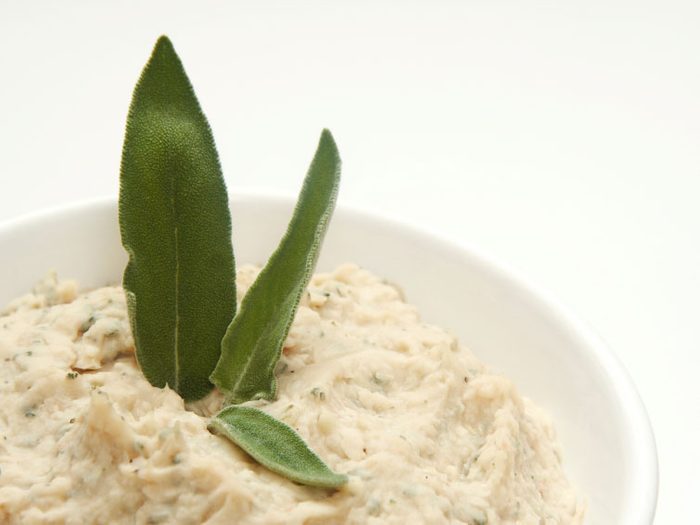
Roasted Fennel and White Bean Dip
Why fennel: While Europeans have been citing fennel as a digestive aid for centuries, its benefits extend beyond relieving post-dinner bloat. One 25-calorie cup of this crunchy veggie packs 10 percent of your daily potassium needs – an important mineral for reducing elevated blood pressure. While that doesn’t mean you can undo the damage of a bag of chips by eating a bulb of fennel, research suggests that low potassium plays as much of a role as excess sodium in your risk of hypertension and stroke.
How to: A roasted fennel and white bean dip is a delicious and nutritious snack. Heat 2 tablespoons olive oil in a non-stick skillet over medium heat and sauté 3 cloves of garlic with 1 large halved, cored and roughly chopped fennel bulb. Once browned, add 1/4 cup water and simmer until the water evaporates and the fennel is softened, about 5 minutes. Purée the fennel and garlic with 1 (15 oz) can of no-salt-added cannellini beans (drained and rinsed), the zest and juice of 1/2 lemon, 1/4 tsp chili flakes and a pinch of salt. Spoon into small containers, along with crunchy slices of raw fennel, to get you through that inevitable 3 p.m. energy dip. Serves 6 to 8.
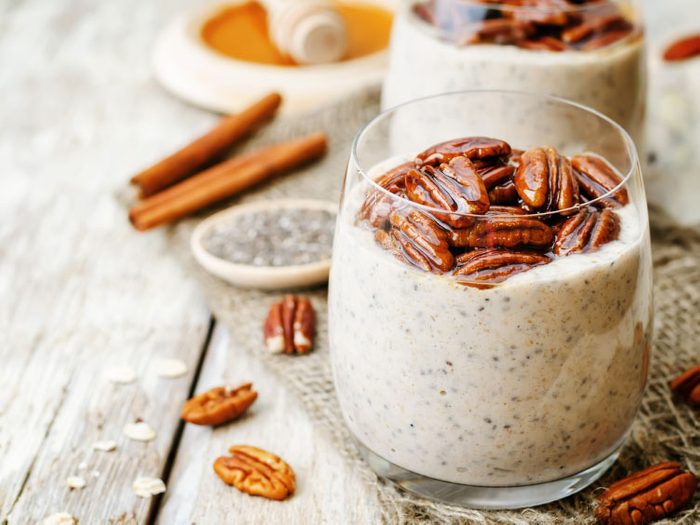
Persimmon Chia Pudding
Why persimmon: With their bright orange hue, persimmons are obviously an excellent source of vitamin C, but they’re heart-healthy, too. In fact, persimmons beat apples when it comes to their heart-healthy benefits: They are packed with twice as much fibre, antioxidant-rich phenolics and tannins and contain doses of electrolytes, magnesium, calcium, iron and manganese. Research has cited persimmons as one of the top foods for reducing your risk of heart attack and stroke.
How to: Persimmon chia pudding is an easy (and nutritious) weeknight dessert. Whisk together 1 cup unsweetened vanilla almond milk with 1 cup plain Greek yogurt, 1/2 cup chia seeds, 2 tablespoons honey and a pinch of cinnamon. Cover and refrigerate overnight. Meanwhile, slice 4 hachiya persimmons in half and purée in a food processor. (If they’re not already fully ripe, place them in a paper bag with an apple for a day or two until their flesh is soft.) Spoon the chia pudding into individual bowls, layer with persimmon purée and top with 1 tablespoon toasted shaved coconut. Serves 4.
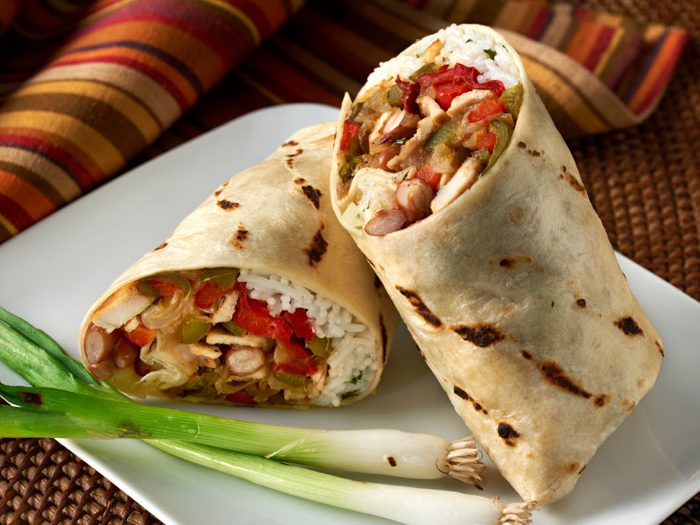
Wild Rice Wraps
Why rice: You may know it’s a gluten-free alternative to wheat, barley and spelt, but did you know that wild rice can also help you manage your weight by curbing cravings? Despite the misleading name, wild rice packs almost twice as much protein and three times as much fibre as traditional long-grain white rice. Studies suggest that foods with the powerful hunger-crushing combination of protein and fibre can help you avoid junky temptations and feel satisfied for longer.
How to: Wild rice wraps are a fun alternative to family taco night and, in this version, they’re low-carb, too. Here’s how: Plunge 4 large Swiss chard leaves into a pot of salted boiling water for 30 seconds, then transfer to ice water before draining and drying. Meanwhile, bring 11/2 cups water to a boil and stir in 1 cup wild rice. Reduce heat and simmer, covered, for 40 to 45 minutes. Let cool. Lay the chard wraps down in front of you with the rib vertical to your body. Divide the cooked wild rice between wraps and fill each one with 2 thin slices of apple, 1 tbsp dried cranberries, 2 oz shredded cooked chicken breast and 1/2 oz chèvre. Making sure there is a 1-inch border all around, fold the long side of the leaf toward the centre rib and roll it away from you, tucking in the edges as you roll. Serves 4.
